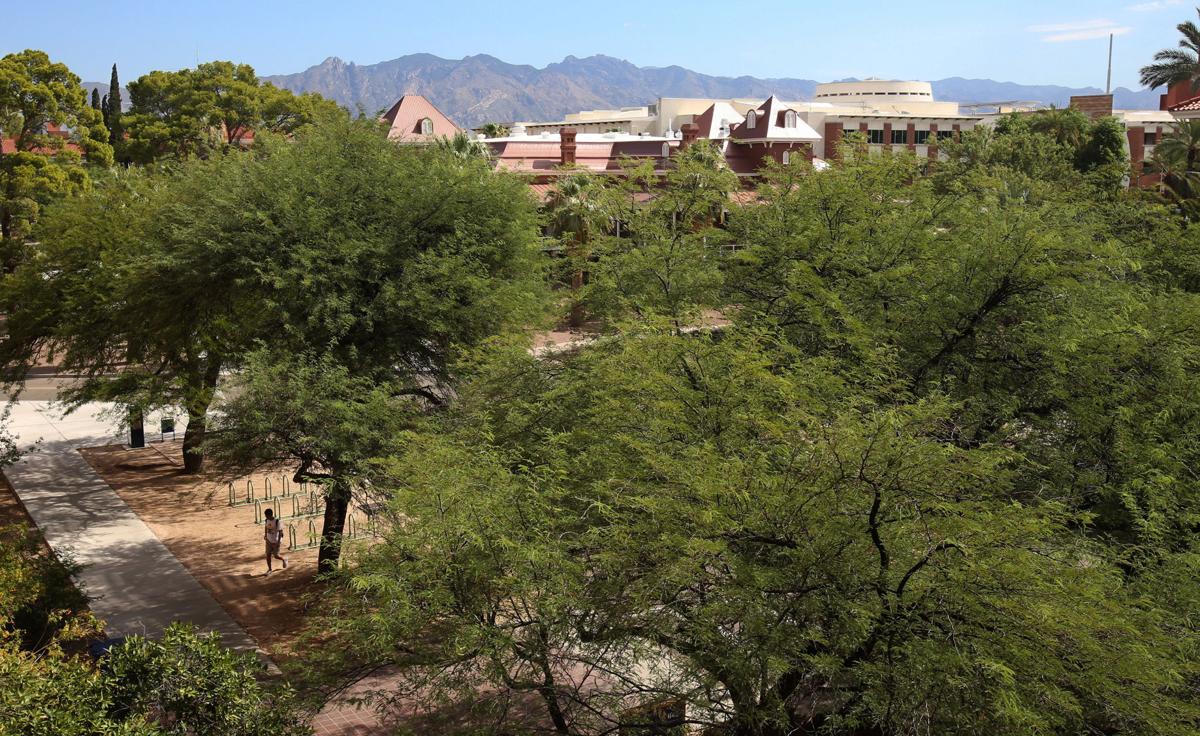The University of Arizona is getting a new humanities department, three new degree programs, another parking garage and some office space on East Broadway.
The Arizona Board of Regents met in Tucson this week to discuss the finances and operations of the state’s three public universities.
Here are some noteworthy updates regarding the UA from the meeting:
New parking garage south of stadium
The regents approved the UA’s request for a $22-million project to build an additional parking garage south of Arizona Stadium.
The new garage would replace surface parking lots near facilities, including residence halls, a recreation field and the environmental sciences building.
Construction for the 282,000-square-foot parking structure is to begin in December and be completed by August 2017. It will be built on what is now a surface parking lot.
The garage would accommodate 915 parking spaces.
It’s intended to provide easy access to dormitory residents and members of the public who attend UA’s athletic events.
The cost estimate for the garage’s annual maintenance and operations is about $739,000.
One new department, 3 new degree programs
The UA will establish a new public and applied humanities department in the College of Humanities.
There are a number of humanities scholars at the UA who are working in areas that don’t fall neatly into other fields, said Andrew Comrie, the UA’s academic provost and senior vice president for academic affairs.
The university will also add three new degree programs : bachelor of science in architectural engineering, bachelor of science in pharmaceutical sciences and a graduate program in Persian and Iranian studies.
The architectural engineering program would attract about 75 students by the third year.
“This will fill a certain niche and will be attracting students who are not just interested in one area,” said Gail Burd, UA’s senior vice provost for academic affairs.
The pharmaceutical sciences program would prepare students for entry-level employment in the biotechnology industry and is part of the UA’s effort to keep its graduates working in the state.
With the interdisciplinary program in Persian and Iranian studies, the university wants to address the growing demand for learning Farsi. The UA expects 12 master’s level students and 15 doctoral students by the third year.
None of these programs would necessarily be taking students away from existing programs, Comrie said.
UA to buy property
on Broadway
The university will buy property at 1700 E. Broadway for $1.25 million from Henry Chung & Co. to relocate some of the programs displaced by Banner-University Medical Center’s construction.
UA programs taking up more than 120,000 square feet of space that are now at Banner facilities must be relocated because of the construction.
There’s some room at UA’s main campus, but the Broadway property, which would provide 12,500 square feet of office space and 60 parking spaces, is needed to fit all the programs in. The office building is also less than a half-mile from the main UA campus.
Enrollment growth across the state not as strong in Tucson
All three public universities saw enrollment increases between fall 2015 and fall 2016, but the University of Arizona’s growth was not as robust as that at Arizona State or Northern Arizona universities.
ASU reported an overall enrollment increase of 7.5 percent to 98,000 students, and NAU, 4.4 percent to 30,000 students. As for Tucson’s public university, the increase was 1.2 percent to 43,625 students.
While the headcount at the UA increased, there are fewer full-time students enrolled at the main campus. Part of that could be because of the UA Online program, said Dan Anderson, the regents’ director of institutional analysis.
Sales tax plan would address capital needs
The university system needs more money to address growth as part of the regents’ strategic plan and building renewal.
To do that, the regents’ staff is proposing that a portion of the sales tax generated by the universities be returned as capital funding. If 5 percent is recaptured, the program would produce about $35 million a year.
Two state programs that provided capital funding for the universities have been exhausted, said John Arnold, the regents’ vice president for business management and financial affairs.
The regents have identified more than $671 million in renewal needs statewide.





